News & Events
How Photographers Can Protect Their Photos (and Democracy) from Generative AI
by Marshall Mayer
Published by Peta Pixel
Sight was the first of our senses to be technologically shared in a world we did not witness with our own eyes. Photography—writing with light—has historically meant a one-to-one relationship between what was before a camera (defined as a lens focusing light on a recording media) and what came out the other end, created by a human. For nearly 200 years, democracy and photography evolved together, to their mutual benefit. We could agree on what we were seeing in an authentic photograph, and often what it meant. The photographic still serves as a hallmark of visual reliability. Photographs have often been the catalyst for social understanding—and social change—because we could trust what photographs represented.Photography can still represent “truth.” But a photographer is the key to establishing visual trust. There is a well-developed but heretofore implicit ethic (“tell the truth”) to establish this trust relationship. First and foremost is, “I was there,” i.e., the photographer is a witness.
But photography as we trusted it in 2022 no longer exists. At the end of that year, OpenAI released DALL-E, the first publicly available artificial intelligence tool that generates images based simply on typing a text prompt.
Read the full article at Peta Pixel
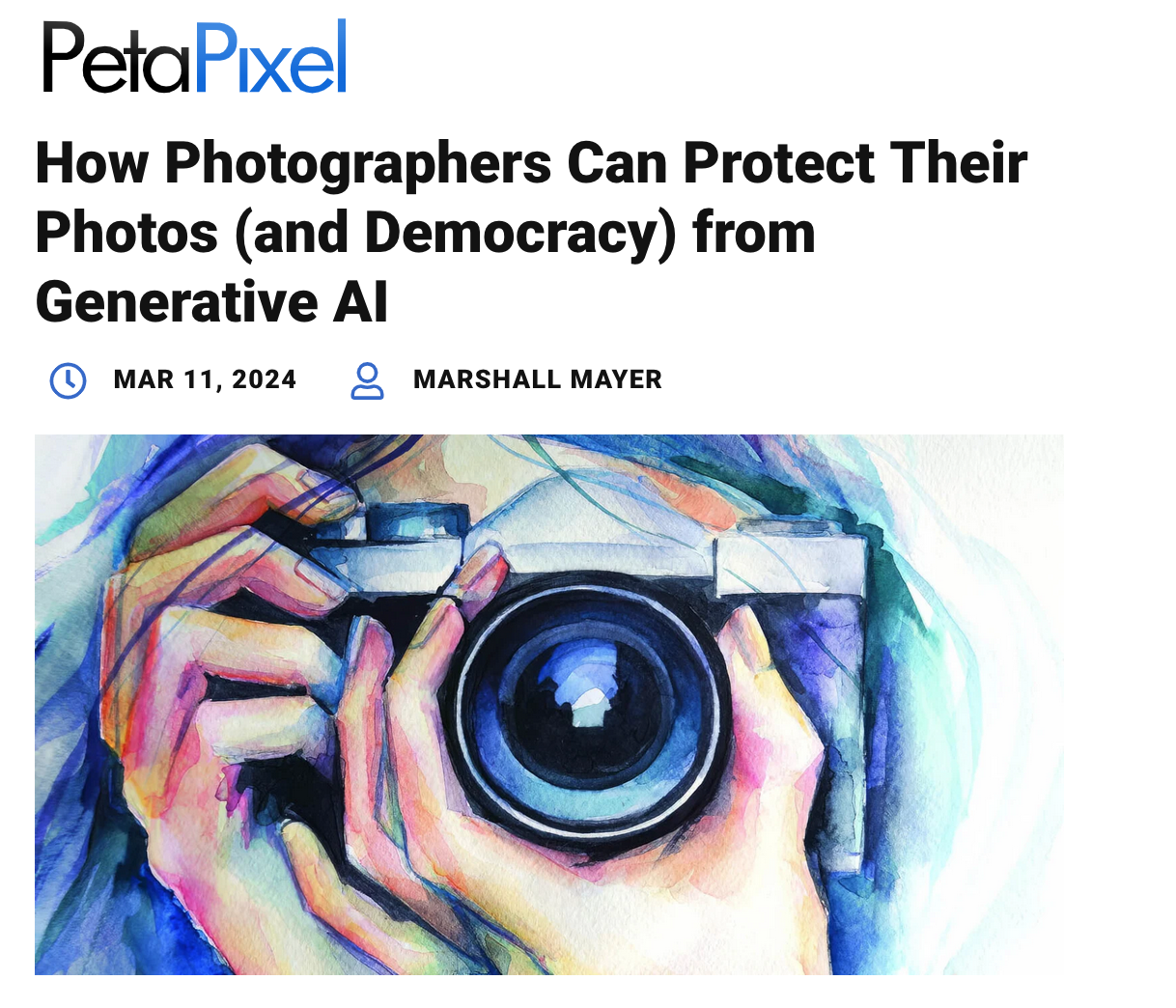
The Role of the Photographer in the Age of AI
Possible Paths Forward
by Savannah Dodd
Published by Trigger
In Conjunction with FOMU Museum
Given the massive growth of generative AI technologies throughout 2023, it’s important to take stock of the challenges and opportunities for ethical photographic practice that they present. However, one article cannot possibly address the multitude of ethical considerations that come with these technologies, which are growing in number day by day. Instead, I’ll narrow the focus of this article to three objectives: to articulate the ethical imperative for photographers to broaden the dataset; to consider how to ethically make work about others using generative AI; and to problematise the speed of AI in a culture of productivity in which visual artists necessarily operate. While these themes may seem disparate, I will demonstrate how they’re interrelated, and how understanding this interrelation can help photographers situate their practice in light of these emergent technologies.
Read the full article at Trigger
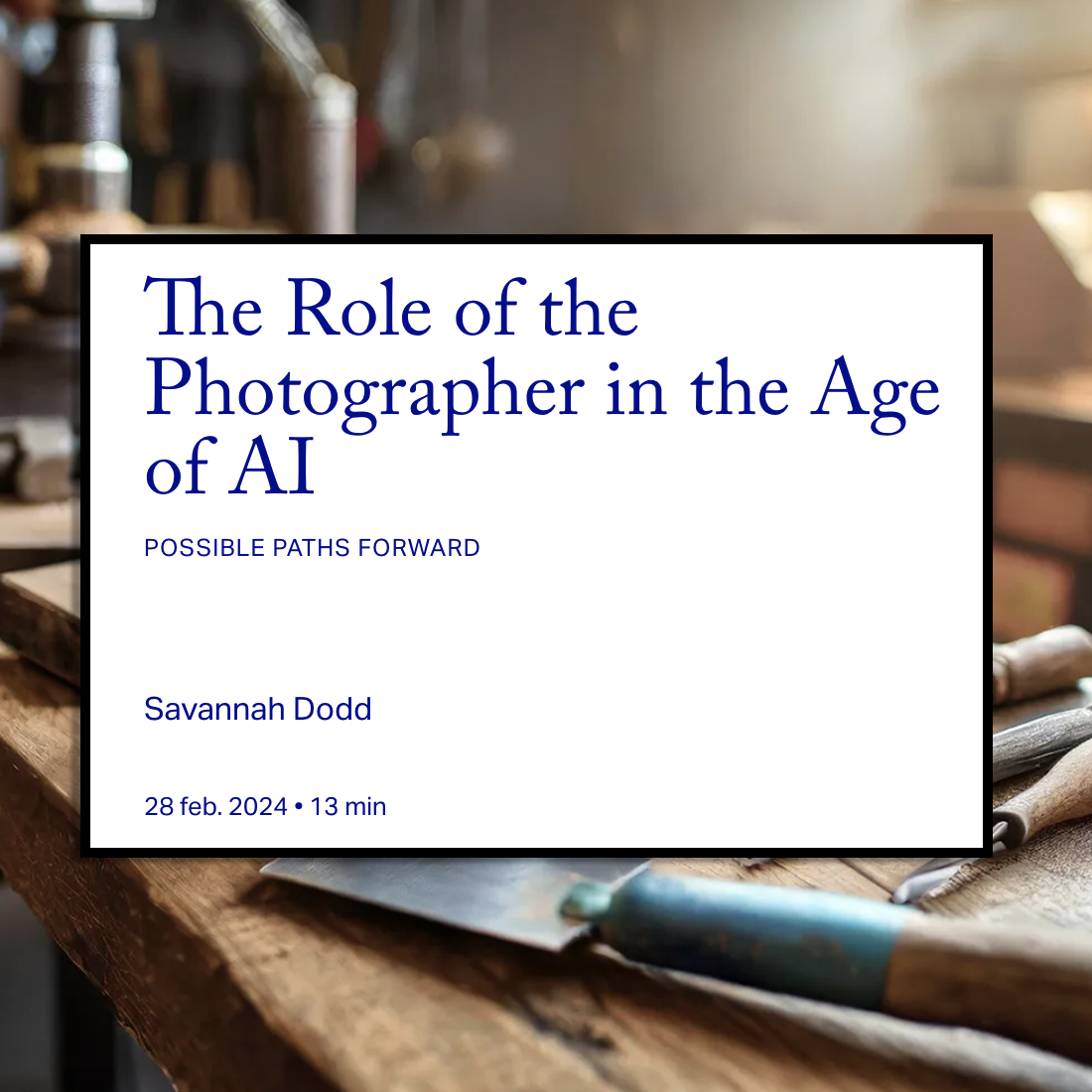
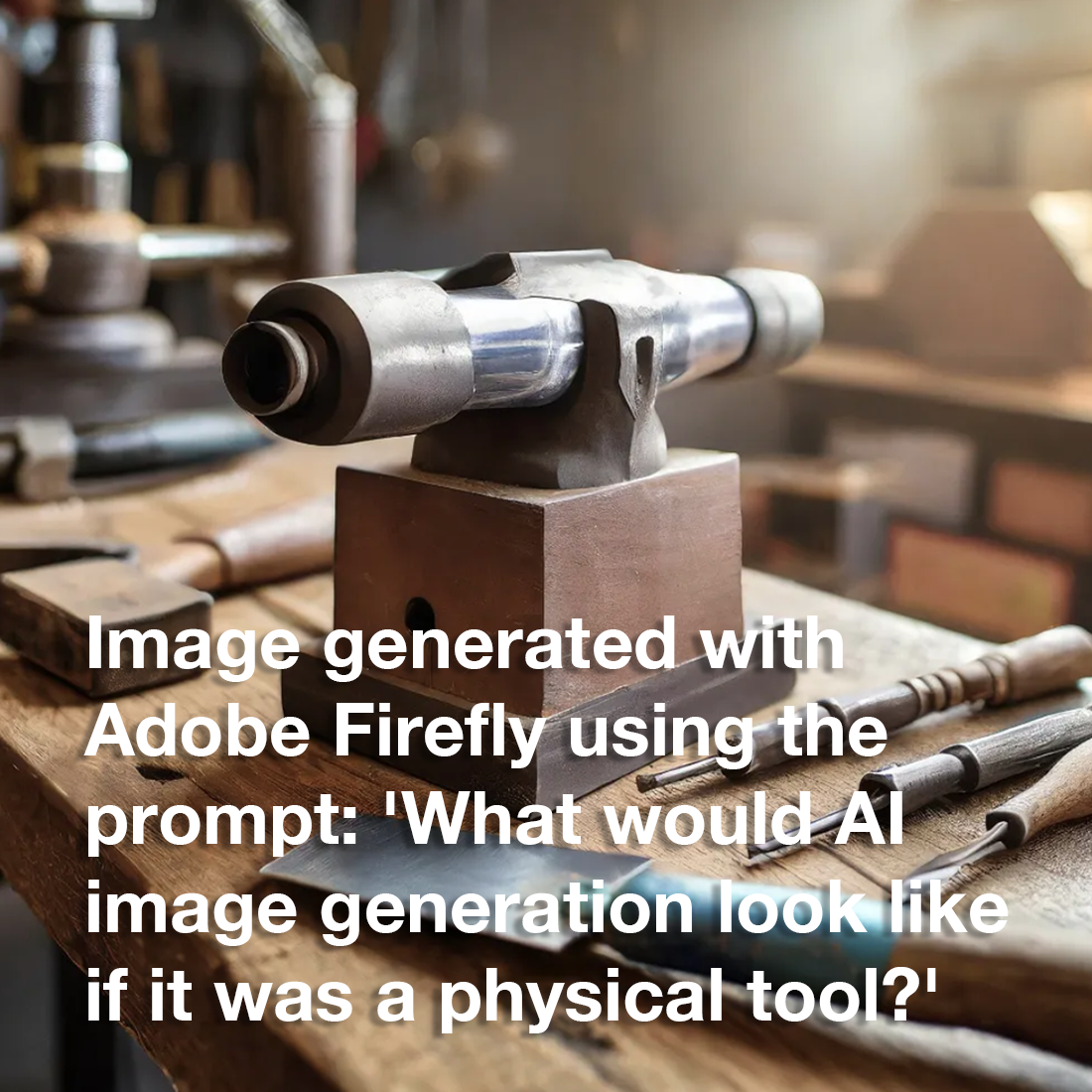
Fred Ritchin: Challenges and Possibilities of the Digital and AI Revolution – Published by Hot Mirror
HM: You’ve been working on efforts to establish more the line between AI and actual photographs. You’ve created an organization working on that.
FR: Recently we did the Writing with Light campaign with World Press Photo, Magnum Photos, National Press Photographers Association, and others. What we’re saying is, you can’t trust the camera, it’s no more reliable than a pen or a typewriter or a computer for a writer. You have to trust the photographer as the author, that what he or she is photographing is not heavily manipulated, synthetic, or distorted in any substantial way. That’s where our effort has gone.
There are other efforts to put watermarks on pictures, such as that the camera has a cryptographic signature on it — where and when it was taken, any changes made to the image. But to me, if you start registering any changes to an image then you’re giving the reader potentially the right to keep clicking and find every change you made to an image. As a writer, if I do an interview, I’m not going to allow a reader to click and see the entire transcript. You have to trust the integrity of the writer, the editor, the editorial process.
I think these kinds of cryptographic safeguards, for insurance purposes, forensic purposes, can be very useful. For editors, it can be very reassuring to see that somebody’s GPS says they were in the place they said they were, and so on. But I think above all, we really have to be able to trust the human being, the photographer, to do the right thing.
Read the full article at Hot Mirror
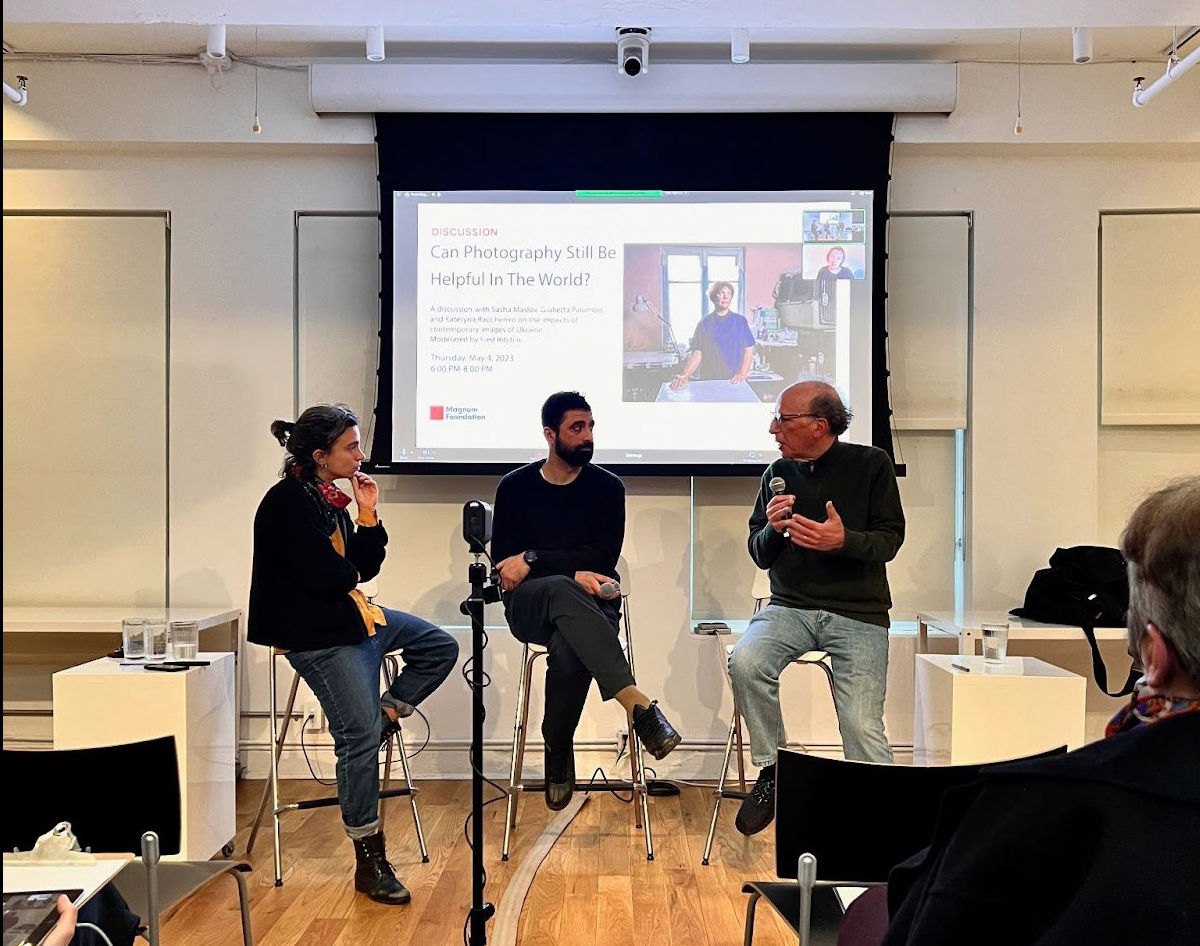
Fred Ritchin (right) in a panel discussion titled “Can Photography Still Be Helpful in the World?” with photographer Sasha Maslov and Magnum Photos Editorial Director Giulietta Palumbo. Photo by Emily Pederson.
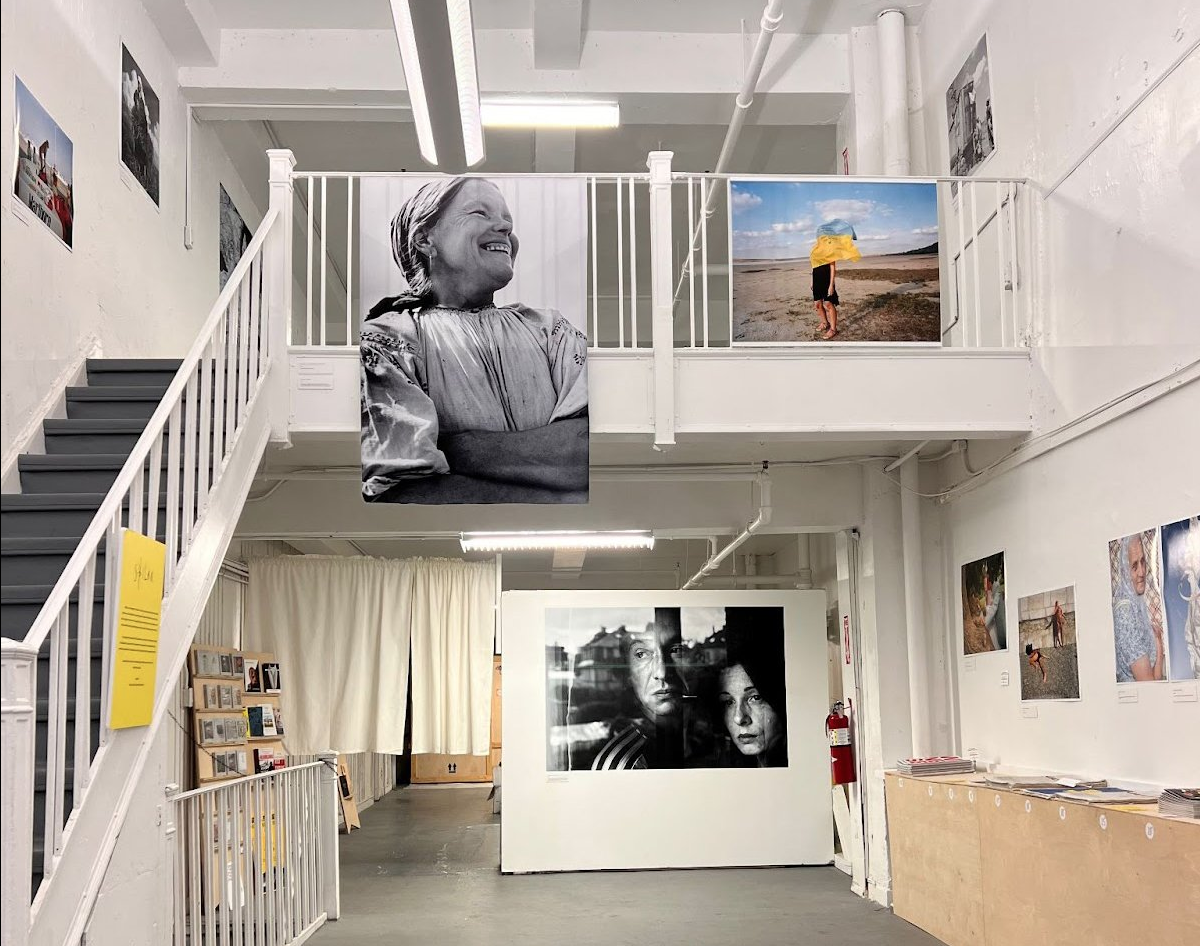
Ukrainian Perspectives: Photography from the 1940’s–Now, a photography and multimedia exhibit curated by Fred Ritchin and Ira Lupu. ChaShaMa, New York, April 2023. Photo by Emily Pederson.
SFW Creativity Continues – Ethics and Visual Journalism with Fred Ritchin and Andrea Wise
Visual journalists adhere to ethical standards in capturing and presenting images. In a discussion hosted by Santa Fe Workshops’ “Creativity Continues,” Fred Ritchin and Andrea Wise explore the evolving ethics in visual journalism. They examine the influence of technology and shifting perceptions on ethical debates, while also considering the impact of emerging storytellers on the future of photojournalistic ethics.
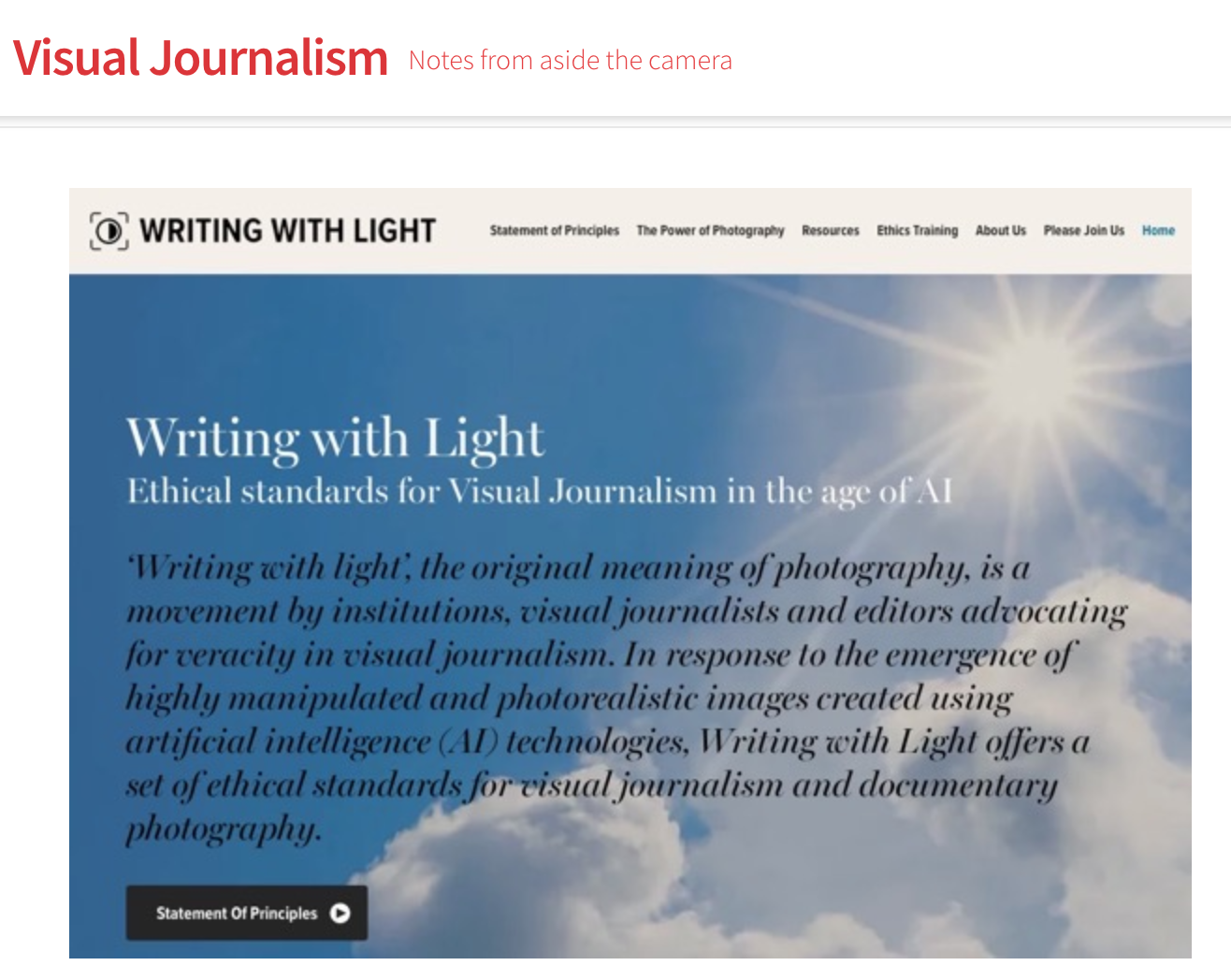
Writing With Light
by Mark E. Johnson
For the last several months, I’ve been participating in a conversation about AI generative images. This working group, made up of photojournalists, editors, intellectuals, attorneys and technical experts, has come together to look for solutions to an existential threat to journalism – that the public may come to not trust anything they see anymore.Our thoughts so far – and this “so far” is critical, as this is an ongoing discussion – have been encapsulated in a new web site, Writing with Light, and include a statement of principles. Moving the needle on this is brutally difficult, but our first call to action is relatively simple – if you are a journalism organization or an individual visual journalist, make it clear where you stand. What are your ethical guidelines? And can the general public find them easily?
Read the full article at Visual Journalism: Notes from Aside the Camera
Using artificial intelligence, photorealistic images can be generated in seconds, depicting people and places that never existed and events that never happened. These synthetic images threaten the livelihood and credibility of photographers, as well as potentially transforming what is thought of as real. But it also allows a more imaginative and at times playful way of depicting much that is outside the realm of photography, including the future and the distant past, thoughts and dreams, and the perspectives of people whose stories are not always fully told. Where is this revolution in imaging taking us, and where do we want to go? “A.I., Photography, and our Futures” will try to find an answer to this urging question.
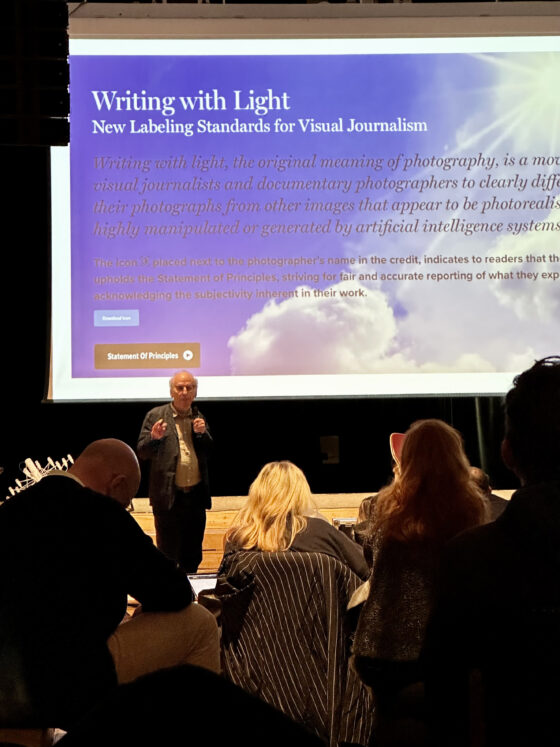
Fred Ritchin presenting the Writing with Light campaign and its statement of principles at the PhotoVogue Festival in Milan, Italy, November 17, 2023.
The influence of AI on photojournalism
PwC advises World Press Photo in drawing up policy.
November 7, 2023
(click the title or here to read the for full article published in PwC)
“ …(Anna Lena) Mehr, as representative of World Press Photo, has joined Writing with Light, a working group of (photo) journalistic organisations that is setting up ethical standards for the use of AI. Mehr states, ‘The core statement that the working group recently published is that journalistic photographs must be fair and accurate representations of what the photographer has witnessed. And if AI generated imagery is used, it must be clearly stated in the credit or caption near or on the image.’
Regarding the Pain of Others in Israel and Gaza: How Do We Trust What We See?
A near collapse of the media ecosystem has left us unable to gauge what is going on.
By Fred Ritchin
November 2, 2023
(click the title or here to read the for full article published in Vanity Fair)
“ But one partial solution involves changing the mindset of both the producers and consumers of media so that they begin to regard photographers in a manner similar to how they view writers, as authors responsible for the integrity of their own work. I have been involved in an effort, along with representatives of organizations including World Press Photo, Magnum Photos, and the National Press Photographers Association, to try and reclaim photojournalism’s original mission. In response to the increasing number of manipulated and synthetic images online, we just recently launched a website, Writing With Light, and our statement of principles begins, “As recordings of the visible, journalistic photographs must be fair and accurate representations of what the photographer witnessed.” While our initiative will not suddenly illuminate the fog, it may provide some coherence and needed light.
